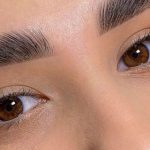I’ve been wondering why so many of you ignore cosmetic labels. Do you buy random products or prefer to pick them consciously?
I’m exploring this topic to tell you why I carefully read the labels and which must-know pieces of information are included in a simply-looking list of ingredients. Still, I must confess, once I wasn’t such ‘label maniac’ and I used to pay more attention to price, opinions and brands. Today, I have much broader knowledge and I’m ready to advise which beauty products to choose.
What’s included on a cosmetic label?
A label on a packaging always holds some worth-knowing info. Some of the markings are obligatory which was quite surprising. Do you know what pieces of information are there on cosmetic labels?
- Product’s name
- Manufacturer/brand’s name and address
- Amount of a product (weight, size)
- Expiration date
- Batch number (comes useful when you want to make a complaint)
- List of ingredients i.e. INCI
- Warnings e.g. about the eye contact
PAO symbol. An important marking on your cosmetic!
Do you know what the jar symbol on your moisturizer or hair conditioner means? It’s a critical piece of information you must know.
PAO symbol (open jar) is not equal to an expiry date. The difference is very simple. The expiry date means the product can be used and doesn’t lose its properties until this date. On the other hand, PAO determines usefulness after opening the packaging. It’s usually shorter, given in months.
You might ask: why an open jar means a product won’t be good to use after a few months even though the date says it will expire after two years?
After opening the product, air and impurities get inside which causes the product to go off more quickly. That’s all 🙂
If there is no PAO sign on your product…
… you probably hold a sample, aerosol (it doesn’t need the symbol) or a product which doesn’t lose its durability. Some cosmetics have a predetermined shelf life e.g. mascara keeps fresh for up to 6 months after opening.
INCI, or a list of components. What will you find out?
In accordance with the European Union regulations, the ingredients of each cosmetic must be presented according to widely-accepted, universal rule. Plant ingredients are written in Latin whereas synthetic compounds in English.
If you can’t see INCI on the packaging, it must be in the leaflet. If it’s not there, you probably got a fake or product of unknown origin.
By analysing INCI, you’ll find out:
- if a product is based on water or e.g. natural oils
- if a product contains animal-derived substances
- if a product is enriched with valuable plant extracts
- if a product is full of preservatives, silicones, etc.
- if a product contains one of 26 potential allergens
- if a product holds any substances that you’re allergic to
Hazardous cosmetic ingredients
The key thing I advise you to check cosmetics for is the content of potentially-harmful ingredients. If a cosmetic contains a substances which is likely to harm you, you’d better give up on it. Let’s pick natural beauty products which are free from ingredients listed below.
- Parabens, or cancerogenic preservatives that more and more countries put on list of prohibited substances (Propylparaben, Ethylparaben, Methylparaben, Butylparaben, Benzylparaben, Isobutylparaben).
- Mineral oils, or derivatives of… petroleum, which may clog skin pores and intensify inflammation and acne (Mineral Oil, Paraffinum Liquidum).
- Aroma substances, especially ones put on the list of potential allergens which may cause skin irritation (incl. Citral, Eugenol, Cumarin, Geraniol, Cinamal, Citronellol, Linalol, d-Limonen, Isoeugenol etc.).
- Strong detergents which are responsible for skin cleansing but when used for a long time, they cause allergic reactions, dry out skin, trigger itchiness and irritations (SLES, Sodium Laureth Sulfate, SLS, Sodium Lauryl Sulfate).
These are just some of the products I warn you against. If you got interested in the topic and feel like getting to know other cosmetic ingredients better, try searching more info online.
Time has come for… summary!
As you can see, a regular cosmetic label is a source of information helping us make the right beauty choices. Only by looking at PAO you learn if a product has natural ingredients: the fewer the months, the fewer the preservatives. Still, most secrets are hidden in INCI, that is a list of ingredients. I vouch for products which are mostly made of plant extracts and oils.




Leave a Reply